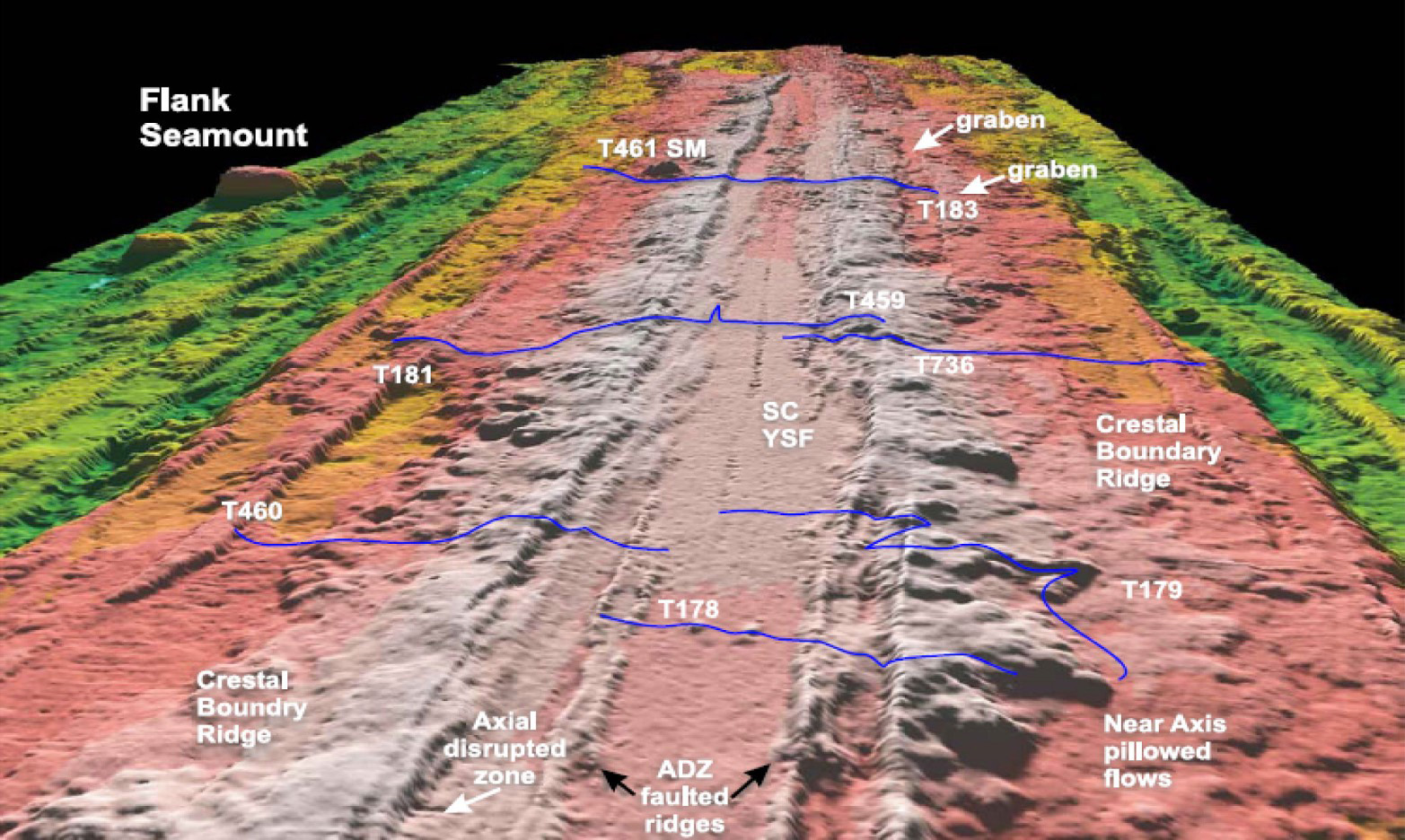Over 60% of the Earth’s magma flux, > 21 km3/yr, takes place at mid-ocean ridges (MOR). These divergent plate boundaries are the loci of volcanism and plutonism that form the oceanic crust, which covers over 70% of Earth’s surface. Mid-ocean ridge magmas typically undergo less modification and differentiation from their original primary melt composition than magmas erupted in continental settings or at oceanic islands. With a less complicated history, these MOR lavas provide a clearer window into mantle melting and magma chamber processes. Much insight into many different magmatic rock suites can be gained by understanding the magmatic processes involved in the formation of mid-ocean ridge lavas and determining their petrogenetic histories.
The major rock type recovered at MOR is basalt. In fact, because it is so common, basalt found at spreading ridges are called MORB, or mid-ocean ridge basalts. Other terms that have commonly been used to describe MORB include ocean ridge basalts (ORB), abyssal tholeiites, ocean ridge tholeiites and low-K olivine tholeiites, implying certain compositional characteristics.
In this investigation you will examine the petrography and geochemistry of 6 samples of mid-ocean ridge basalt and related differentiated lavas recovered from the Cleft segment of southern Juan de Fuca Ridge (JdFR), a medium spreading-rate MOR in the northeast Pacific Ocean (Figure 1.01). The goals of this investigation are to:
- Investigate magmatism in a mid-ocean ridge environment
- Examine petrography and mineralogy of tholeiitic igneous systems
- Relate observed textures and mineral phases to relevant basalt phase diagrams and magma evolution
- Correlate observed mineralogic changes with magma chemical evolution
- Investigate how chemical variations may correlate with MOR/tectonic environment.
